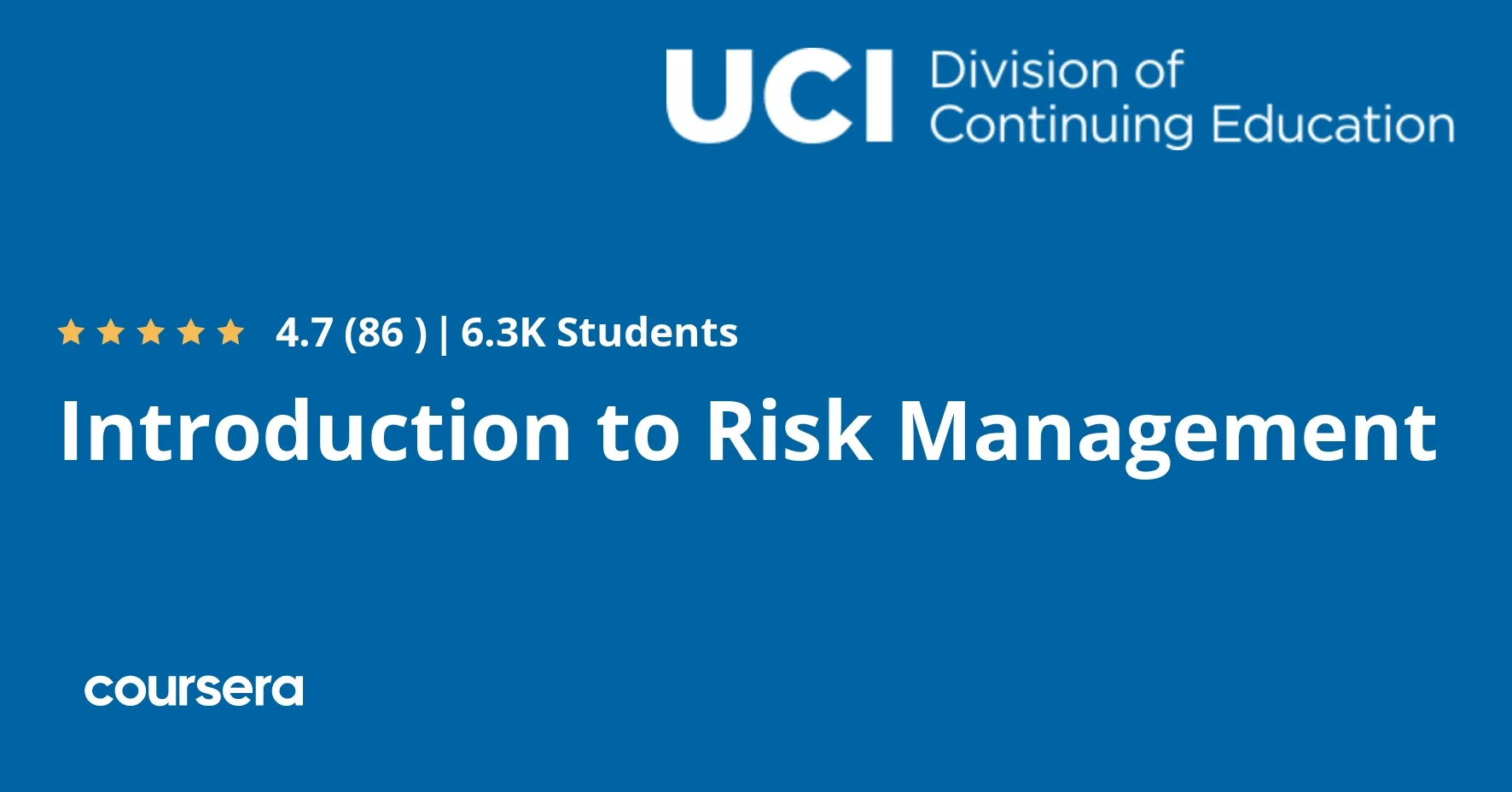
Introduction to Risk Management 
This course provides an introduction to risk management, exploring risk assessment techniques and strategies for asset protection. Students will gain an understanding of the relationship between assets, vulnerabilities, threats, and risks. ▼
ADVERTISEMENT
Course Feature
![]() Cost:
Cost:
Free
![]() Provider:
Provider:
Coursera
![]() Certificate:
Certificate:
No Information
![]() Language:
Language:
English
Course Overview
❗The content presented here is sourced directly from Coursera platform. For comprehensive course details, including enrollment information, simply click on the 'Go to class' link on our website.
Updated in [March 06th, 2023]
This course provides an introduction to Risk Management. Participants will learn about risk assessment techniques as well as how to implement a variety of strategies to ensure asset protection. Through this course, participants will discover the connection between assets, vulnerabilities, threats, and risks. Topics covered include risk identification, risk assessment, risk control, and risk management. Participants will also learn about the different types of risk management strategies and how to apply them in various situations. Upon completion of this course, participants will have a better understanding of risk management and how to use it to protect their assets.
[Applications]
After completing this course, participants can apply the knowledge and skills acquired to assess and manage risks in their own organizations. They can use the risk assessment techniques to identify potential risks and develop strategies to mitigate them. Additionally, they can use the strategies learned to protect their assets and ensure their organization is prepared for any potential risks.
[Career Paths]
1. Risk Analyst: Risk Analysts are responsible for identifying, assessing, and managing risks associated with an organization’s operations. They use data analysis and risk management techniques to identify potential risks and develop strategies to mitigate them. This role is becoming increasingly important as organizations become more aware of the need to protect their assets and operations from potential risks.
2. Risk Manager: Risk Managers are responsible for developing and implementing risk management strategies and policies. They work with stakeholders to identify potential risks and develop strategies to mitigate them. Risk Managers also monitor and report on the effectiveness of risk management strategies and policies.
3. Security Analyst: Security Analysts are responsible for identifying, assessing, and managing security risks associated with an organization’s operations. They use data analysis and security management techniques to identify potential risks and develop strategies to mitigate them. This role is becoming increasingly important as organizations become more aware of the need to protect their assets and operations from potential security risks.
4. Compliance Officer: Compliance Officers are responsible for ensuring that an organization is in compliance with applicable laws and regulations. They work with stakeholders to identify potential risks and develop strategies to mitigate them. Compliance Officers also monitor and report on the effectiveness of compliance strategies and policies.
[Education Paths]
1. Bachelor of Science in Risk Management: This degree program provides students with a comprehensive understanding of risk management principles and practices. Students learn how to identify, assess, and manage risks in a variety of contexts, including financial, operational, and legal. They also gain an understanding of the legal and regulatory environment surrounding risk management. This degree is becoming increasingly popular as organizations recognize the importance of risk management in their operations.
2. Master of Science in Risk Management: This degree program provides students with an advanced understanding of risk management principles and practices. Students learn how to identify, assess, and manage risks in a variety of contexts, including financial, operational, and legal. They also gain an understanding of the legal and regulatory environment surrounding risk management. This degree is becoming increasingly popular as organizations recognize the importance of risk management in their operations.
3. Master of Business Administration in Risk Management: This degree program provides students with an in-depth understanding of risk management principles and practices. Students learn how to identify, assess, and manage risks in a variety of contexts, including financial, operational, and legal. They also gain an understanding of the legal and regulatory environment surrounding risk management. This degree is becoming increasingly popular as organizations recognize the importance of risk management in their operations.
4. Doctor of Philosophy in Risk Management: This degree program provides students with an advanced understanding of risk management principles and practices. Students learn how to identify, assess, and manage risks in a variety of contexts, including financial, operational, and legal. They also gain an understanding of the legal and regulatory environment surrounding risk management. This degree is becoming increasingly popular as organizations recognize the importance of risk management in their operations.
Course Syllabus
Introduction to Risk Management
Risk Management Controls
Risk Management Framework
Course Provider

Provider Coursera's Stats at AZClass
Discussion and Reviews
0.0 (Based on 0 reviews)
Explore Similar Online Courses

The Complete 2018 Beginner Instagram Course

Game Theory From Coursera

Python for Informatics: Exploring Information

Social Network Analysis

Introduction to Systematic Review and Meta-Analysis

The Analytics Edge

DCO042 - Python For Informatics

Causal Diagrams: Draw Your Assumptions Before Your Conclusions

Whole genome sequencing of bacterial genomes - tools and applications

Information Security and Risk Management: An Overview

Risk Management in Global Economy - Online Course - FutureLearn


Start your review of Introduction to Risk Management